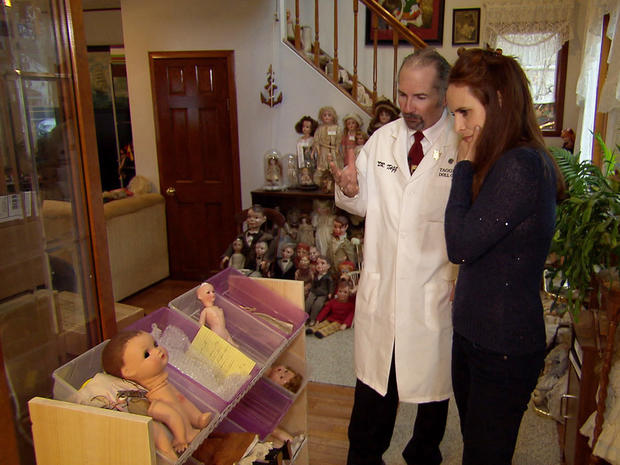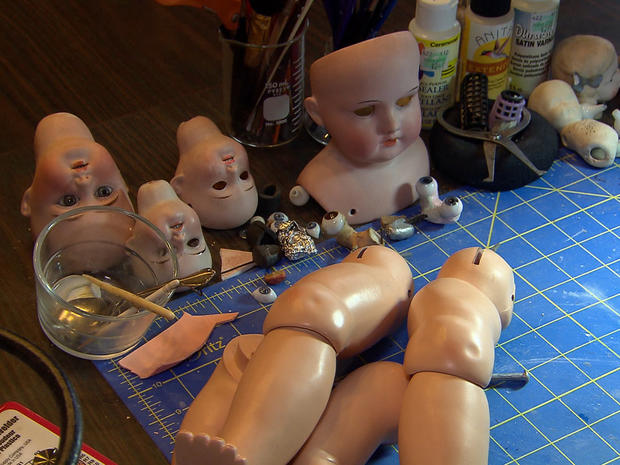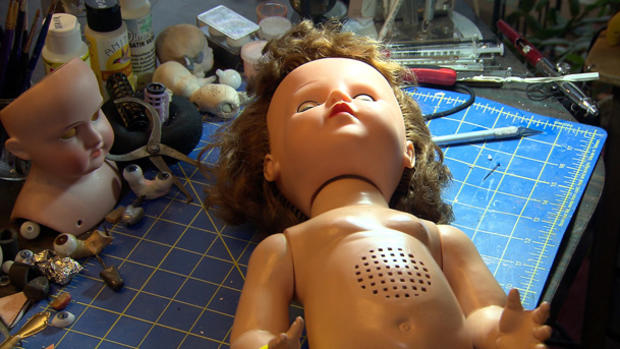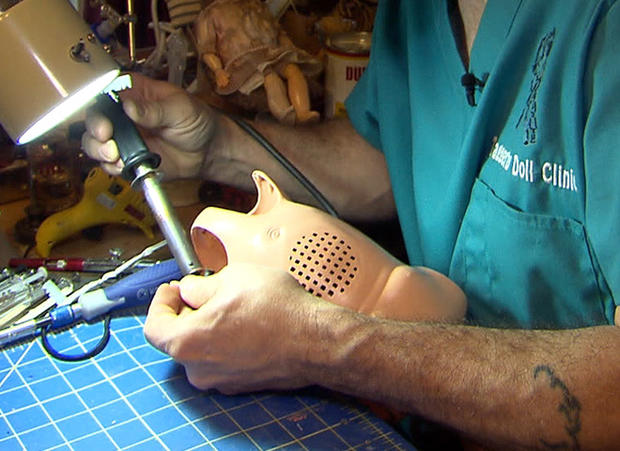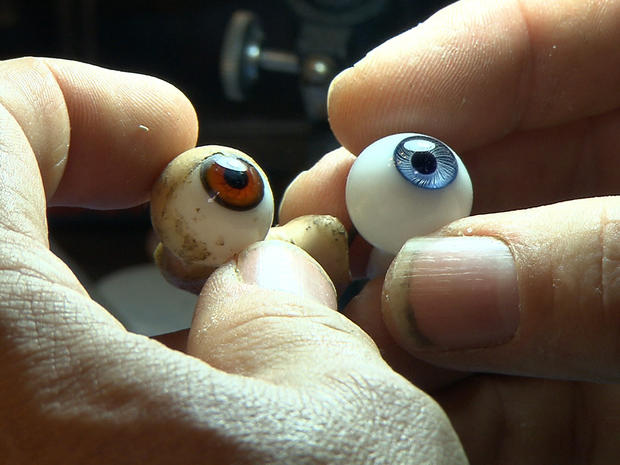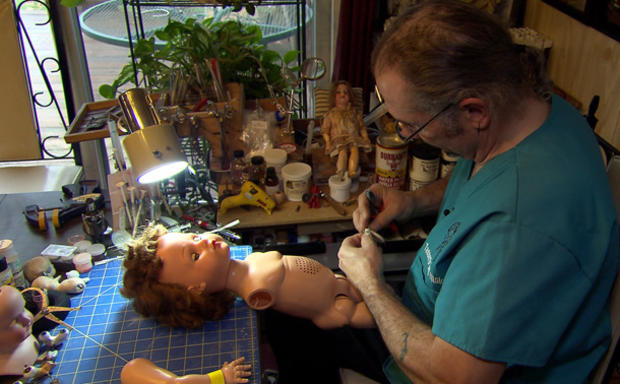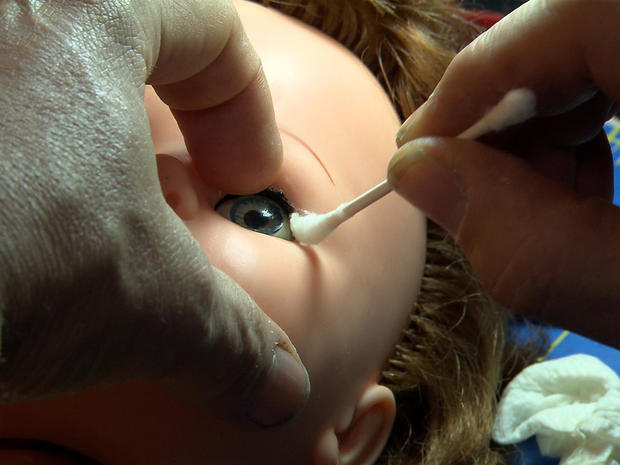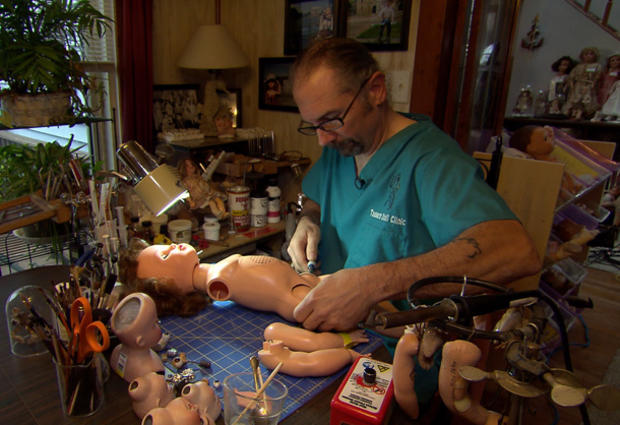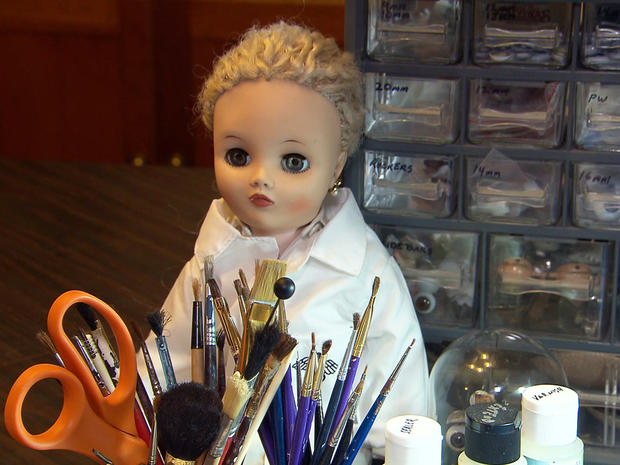A visit to the doll hospital
While Brian Taggerty, of Elmira, N.Y., works as a carpenter, his true labor of love is repairing vintage and antique dolls.
Taggerty has turned his home into the Taggerty Doll Clinic - part hospital (where the beds are almost always full) - and part doll menagerie.
Toy Clinic
Taggerty grew up not realizing that boys weren't "supposed" to play with dolls.
His grandmother, also a doll doctor, had dolls "in every room -- dolls on every horizontal surface. So I didn't think anything of it. I can remember sewing doll bodies when I was six years old. It's just something I grew into."
Toy Clinic
Brian Taggerty is a doll doctor. "I think my grandmother would be proud for carrying on the tradition," "Dr. Tagg" told "Sunday Morning" contributor Faith Salie. "I do a lot of this with her in mind."
Toy Clinic
Taggerty has repaired thousands of dolls, most of which arrive by mail. But his greatest gratification is to repair dolls for owners who have cherished them since childhood.
Toy Clinic
"Occasionally, I'll get some that are local," he said, "and I see the faces on the owners and that alone is worthwhile right there.
"I can see them fighting back tears. Those are the ones that have sentimental value. Sentimental value is, to me, worth more than monetary value. I can repair a doll and bring it to a better condition than it was. But the sentimental value means something to somebody. It's that particular doll that is special. To replace the doll with the same type just isn't the same thing, because it's not the one that they had as a child."
Toy Clinic
Taggerty says the most common repair is for the doll to be restrung: "The elastic within the body has dry rotted, stretched too far, and snapped. Limbs are falling apart. Their heads are wobbly. That's easy."
Toy Clinic
And what's tough to repair? "I think the eyes are the toughest parts. Because the eyes say so much about a doll. When you look at a doll and you say, 'It's a beautiful doll' or 'It's an ugly doll,' you're looking at the eyes. So getting the eyes positioned in the head just right is a very hard thing to do."
"The eyes are the window to the doll?" suggested Salie.
"Yes, yes!" Dr. Tagg laughed.
Toy Clinic
But there are limits to his healing powers.
"There are dolls that come to me that I can tell has H.P.D., which is hard plastic disease, or stinky doll syndrome. There is no cure."
Toy Clinic
Faith Salie asked, "Is being a doll doctor an art or a science?"
"A little of both," replied Dr. Tagg, who is also president of the Doll Doctor's Association. "It is an art form. Not anybody can do it. But it is also a science. You have to know the products that you're using and how it will react on the doll you're repairing."
Toy Clinic
A doll is treated at the Taggerty Doll Clinic.
Toy Clinic
There aren't many doctors like Taggerty left in the country, because most dolls made today are not meant to last.
Toy Clinic
He admitted to Salie that he loves dolls. She asked, "How do you know they love you back?"
"Because they're always smiling," Dr. Tagg said.
For more info:
Taggerty Doll Clinic, Elmira, N.Y.
By CBSNews.com senior producer David Morgan


